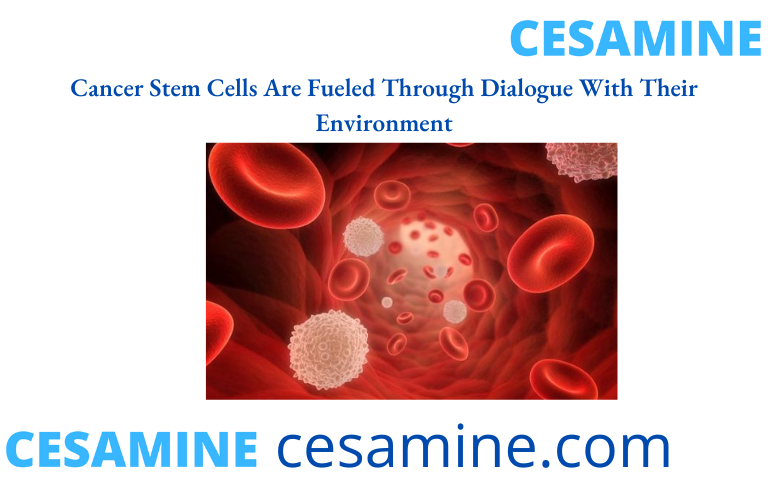What causes a tumour to grow? Is it a few renegade cells that force their will on healthy tissue, or does diseased tissue make otherwise peaceful cells act out? Or is there a conversation between the two, a back-and-forth? A recent study suggests that the latter is likely the case, at least when it comes to the development of one prevalent skin cancer.
Researchers discovered that a single mutant gene in a stem cell that is otherwise healthy can start a feedback loop of misunderstanding between the cancerous stem cell and its surrounding tissue that deviates ever more, feeding the growth of a malignant tumour. The results show that many cancer mutations may simply be paving a path already created by the tumour stem cell’s abnormal communication with its environment. These findings, which were published in Nature, may open the door for cutting-edge methods of treating a variety of tumours if they show to be universally applicable.

Shaopeng Yuan, a graduate student in Elaine Fuchs’ lab at The Rockefeller University, is the study’s primary author. “It’s not only that cancer shapes the microenvironment, or that the environment impacts the tumour,” she explains. “Our research demonstrates that the microenvironment and stem cells in malignancies interact. Together, they form a feedback loop of variables that promote tumour growth.
Squamous Cell Cancer Is Highlighted
A small subset of cancer stem cells lies at the centre of practically every tumour. These cancerous seeds, which are resistant to chemotherapy and immunotherapy, play a crucial role in transforming benign growths into metastatic illness by maintaining the tumor’s viability. A RAS gene that, when mutated, enables tissue stem cells to disregard regular environmental signals and divert from their natural course, encouraging out-of-control tissue growth, is also responsible for many cancer stem cells, including those of skin, pancreatic, lung, and colorectal cancers.
Yuan and associates focused on squamous cell carcinoma, a skin cancer associated with RAS mutations, to better comprehend the subtleties of that connection. Starting with individual skin stem cells, the team induced mutant HRAS (the RAS family member most frequently found in skin tumours) and observed how the malignant stem cells interacted with the surrounding tissue. According to Fuchs, the communication between the cancer stem cell and its surroundings got increasingly abnormal over time. “As we interpreted the exchange, we understood that the miscommunication between the stem cell and its surroundings led to the activation of a pathway that is active in the comparable human malignancies that have a high mutational burden,” the authors write.
This discovery suggested a fascinating prospect. It’s possible that many cancer mutations only confirm the malignant development that has already been decided by abnormal interaction between a cancer stem cell and its surroundings.
Unexpected Function Of Leptin Signalling
The scientists discovered that the invasive cancer stem cells had suddenly started to express the leptin receptor, or Lepr, after further examining how the cancer stem cell evolved as it encountered this new self-imposed malignant tumour microenvironment. Leptin, a hormone made by fat cells and associated with obesity, appeared abnormal in non-obese animals with non-fatty tumours. Normal epithelium does not express lepr, and benign tumour cells seldom ever do either. Here, it surprisingly manifested in the cancer stem cells of the advanced squamous cell carcinoma tumour (SCC).
Yuan demonstrated using CRISPR technology that Lepr and leptin receptor signalling was necessary for the transformation of the benign state into the malignant state. But from where did the leptin come? Leptin did not appear to be increased, and neither benign growths nor cells from advanced tumours nor the tumour microenvironment appeared to express the leptin gene. However, the presence of leptin was extremely beneficial to the malignant tumour that expressed the leptin receptor; the more leptin present, the faster it developed.
The group started to question whether leptin, which typically circulates in the bloodstream, was getting to the tumour through the blood arteries that supply it with nutrition and other components. They offered convincing proof of this through a number of trials. They also showed that many of the pathways known to be hyperactivated in malignancies, such as the PI3-kinase, AKT, and mTOR pathways, were boosted by Lepr/leptin signalling within the cancer stem cells. Together, the researchers explained how a single oncogene could start a chain reaction of misunderstandings between the environment and the stem cell that would eventually result in cancer.
In order to break the cancer’s vicious cycle and stop it in its tracks, the team is now looking into ways to block leptin receptors in tumours. According to Yuan, “the leptin receptor/leptin crosstalk promotes a positive feedback loop that fosters malignancy” between cancer stem cells and the microenvironment. “Perhaps we can stop tumour progression if we inhibit this loop, which is a key route driving tumour progression.”
Squamous cell carcinomas are the sixth most prevalent cancer in the world, affecting not just the skin but also the oesophagus, head & neck, lung, and other epithelial tissues. However, the consequences of the research go beyond this specific malignancy. From the perspective of a stem cell biologist, this work demonstrates how a single oncogenic mutation can initiate events that will propel cancer forward by aberrant exchange with the tumour microenvironment, independent of subsequent mutations. Cancer biologists typically assume that the changes in gene expression that drive tumour progression are the result of many accumulating mutations within a cell.
One oncogenic mutation has the ability to hijack a pathway and accomplish the same goal as many cumulative mutations, according to Yuan’s research. “We are constantly searching for mutations, but we must also consider how to block the signalling pathways that promote tumour growth.”